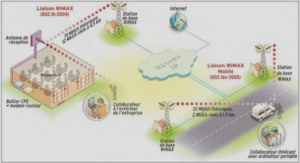Competition is often viewed as one of the main driver of interactions between trees, but this idea is being challenged with examples of cooperation or facilitation through natural root grafting (Bertness & Callaway, 1994; McIntire & Fajardo, 2014). Root grafts are morphological and physiological unions formed between roots of distinct trees (Tarroux & DesRochers, 2010). Solid contact and pressure between thick roots developing parallel or across each other can initiate root grafting and lead to vascular continuity and cambial fusion (Eis, 1972). Research on root grafting has provided important insights into how common it is in both conifers and deciduous species, but the struggles of surveying belowground tree attributes often hindered its assessment in comparison to aboveground characteristics (Lev-Yadun, 2011). As a result, scientists have few evidences on the processes leading to root graft formation, the factors involved and how they operate. Several factors have been suggested to increase root grafting occurrence including rooting depth, root morphology and density, soil moisture and texture (Tarroux & DesRochers, 2010), genetic relatedness (Graham & Bormann, 1966; Loehle & Jones, 1990), exposure to wind (Jelínková et al., 2009), stand density and age (Bormann & Graham, 1959). However, there is growing evidence that distance between trees constitutes the most important factor as it leads to intimate contact between roots of different trees (Fraser et al., 2005; Külla & Lõhmus, 1999; Reynolds & Bloomberg, 1982; Tarroux & DesRochers, 2010).
The importance of root grafting resides in its ability to affect physiology and ecology of the paired trees (Lev-Yadun, 2011). It can allow survival of stumps connected to residual trees after thinning (Bader & Leuzinger, 2019; Tarroux et al., 2010), provide mechanical support and windthrow resistance to connected trees (Basnet et al., 1993) or enable trees to better cope with the negative impacts of insect outbreaks (Salomón et al., 2016). Connected trees can directly share water, nutrients or photosynthates (Fraser et al., 2006; Schultz & Woods, 1967; Stone & Stone, 1975), in turn affecting radial growth of connected neighbors (Adonsou, Drobyshev, et al., 2016; Tarroux & DesRochers, 2011).
Natural root grafts have also been found in tree plantations (Tarroux & DesRochers, 2010). Given that tree spacing affects tree growth (Benomar et al., 2012), one can wonder on the role that root grafting could play in tree relationships in plantations under different spacing conditions. Such relationships may play an important role in fastgrowing hybrid poplar (Populus spp.) plantations, considering their shorter rotation length and the extensive financial investments that are made to maximize growth rates and productivity of trees. To our knowledge, root grafting in hybrid poplar has only been mentioned once (McIvor et al., 2008) in a Veronese clone (Populus euramericana: [Populus deltoides L. x Populus nigra L.]), but its frequency and timing of initiation has never been investigated. Since root grafting is frequent in natural stands of balsam poplar (Populus balsamifera) and trembling aspen (Populus tremuloides) (Adonsou, DesRochers, Tremblay, et al., 2016; Jelínková et al., 2009), we hypothesized that root grafting would also occur in hybrid poplar and that reduced spacing between trees would increase its occurrence.
Experimental design
The Amos site was chosen because it was located on a gentle slope near the Harricana River that allowed hydraulic excavation of root systems of a hybrid poplar plantation. Thirty-six trees of each clone were planted in monoclonal blocks across two spacings (1 x 1 m and 3 x 3 m) , equivalent to approximatively 10,000 and 1,000 stems ha-1 . After 15 years, trees had reached a mean diameter at breast height (diameter at 1.3 m, DBH) under the 1 x 1 m spacing of 9 cm and 11.1 cm respectively for clones 747215 and 915319; and 13.2 and 14.8 cm under 3 x 3 m spacing. Mean height was respectively 10.1 m and 13 m for clones 747215 and 915319 under the 1x 1 m spacing and 9.2 m and 13.2 m under the 3 x 3 m spacing. Mean stem volume was respectively 0.03 m3 and 0.05 m³ for clones 747215 and 915319, corresponding to a yield of approximatively 308.6 and 570 m³ ha-1 , under the 1 x 1 m spacing. Under the 3 x 3 m spacing, mean stem volumes were 0.06 and 0.10 m³ for clones 747215 and 915319, corresponding to yields of 4.3 and 7.5 m³ ha-1 year-1 . Root characteristics were detailed for each clone and spacing in the appendix .
Measurements and data compilation
Slenderness index, an indicator of tree stability and resistance to windthrow (Wang et al., 1998), was also computed as the ratio of tree height (m) to DBH (m). Trees were cut down with a chainsaw and cross-sectional disks of the stems were collected at ground-level (0 m).
Hydraulic excavation with a high-pressure forestry water pump (Mark III; Wajax, Lachine, Quebec) was done to expose root systems and root grafts of each tree (Tarroux & DesRochers, 2010) . Small hybrid poplar roots (< 2 cm) and herbaceous roots were cut and pulled by hand to ease the hydraulic excavation. The 1 x 1 m plots – containing 35 and 32 surviving trees in clones 747215 and 915319, respectively, were excavated (25 m² ). Since it would have been too cumbersome to excavate the whole planted areas in the 3 x 3 m plots (324 m² ), we excavated the roots of 10 randomly chosen trees by following each root from the stump to where it became < 2 cm in diameter for each tree. In total, the root systems of 87 trees were excavated and we decided to exclude from the analyses nine trees that had died some years before the excavation.
Root systems were mapped by hand and cross-sections of each proximal root > 2 cm nearest to the stump was collected and its diameter recorded. Proximal roots (Domenicano et al., 2011) are referred here as the roots that start directly from the stump and which further branch into subsequent roots or secondary segments. These roots are larger close to the stem base allowing easier growth ring visibility and avoiding missing rings (Krause & Morin, 2005).
Dendrochronological analyses
Stem and root discs as well as grafts were collected and brought to the laboratory for dendrochronological analyses. Stem discs (n = 78) and root discs (n = 926) were prepared, measured and analysed conforming to standard dendroecological protocol (Krause & Morin, 1995). All discs were air-dried and sanded progressively from 80 to 400 grit to enhance the visibility of growth rings. Ring counts were done to confirm tree and root ages using a binocular microscope. Root diameters were measured using a Velmex unislide table (Bloomfield, New York, USA). As hybrid poplar roots were mostly elliptical with a T-shape, the largest and shortest perpendicular diameter were measured and averaged to obtain root diameter (Ruel et al., 2003).
We also computed the mean diameter of roots per tree and per plot. Total root surface of one tree was calculated as the product of the number of roots and the average root diameter (Bilodeau-Gauthier et al., 2013). Height-root ratio of each tree was calculated as the ratio between height and total root surface indicating the importance of tree height compared to the roots belowground (Bilodeau-Gauthier et al., 2013).
Root grafting was assessed at three levels: the presence, frequency and age of each root graft. First, root grafts were validated with visual confirmation of vascular fusion of the cambium of the two roots by cutting through each graft with a wood saw. Root grafting was recorded when absent (0) or present (1) for all trees during the survey. The number of root grafts per tree was assessed by noting 0 (when absent) or the counted number. Since root grafting can take several years to complete (Tarroux & DesRochers, 2010), the first year of graft formation was identified as the ring where tissues began to merge, i.e. the year following the last complete and independent growth ring in both roots. The last year of graft formation was identified as the first complete common growth ring surrounding the two roots (Tarroux & DesRochers, 2010). As root grafting might also be related to tree exposure to wind (Keeley, 1988), the location of the grafted trees within each plot was noted as interior or exterior: exterior trees were part of the bordering row of plots, while interior trees grew inside the plots. The age of root grafts allowed us to determine that all root grafts found in this study were only at the beginning of their formation; the effect of root grafting on tree growth could thus not be assessed at this time.
CHAPITRE I INTRODUCTION GÉNÉRALE |




